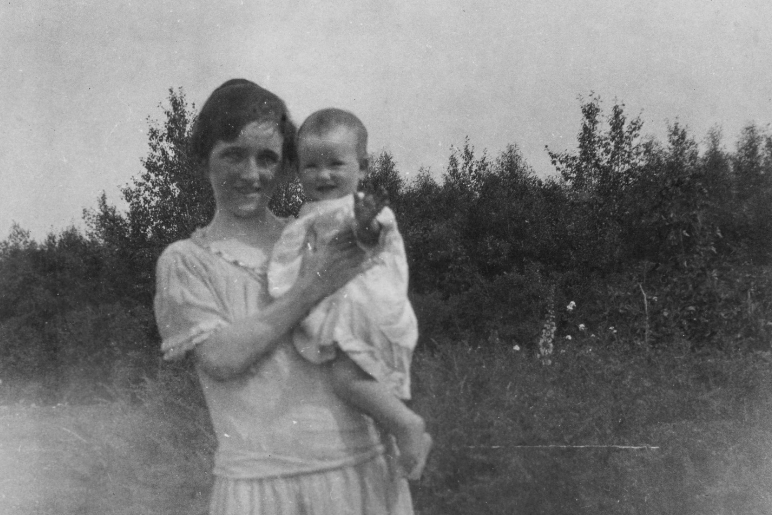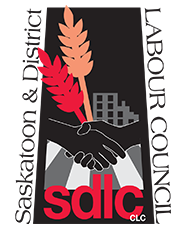Note: For much of the history of what would eventually become Saskatchewan, the land was populated by Indigenous peoples—including First Nations and, later, Métis women. Indigenous women have been living and building community on this land for millennia, and though their contributions to early organizing are not formally recorded, they cannot be understated.
This article is about the activities of newcomer women in the early 20th Century. For more information about Indigenous women activists in Saskatchewan, read “Hidden from history: Indigenous women’s activism in Saskatchewan."
It’s hard to picture what it must have been like to have been a female settler arriving in Saskatchewan in the early 20th century. Though the communities they left lacked economic opportunities, they at least had infrastructure and technology to provide some comfort.
The land now known as Saskatchewan, by contrast, was a flat and treeless place with brutal winters and hot summers like they had never imagined. There was little infrastructure and barely any other people in these communities.
The promised economic opportunities weren’t available to many of them. Few actually owned farmland. Only a handful of jobs would allow women, such as teaching children or nursing.
To survive their new communities of the early 20th century, these women of Saskatchewan had to band together. They did so by forming local chapters of country-wide groups dedicated to improving their lives together.
These earliest groups were very broad in theme. The Council of Women formed chapters across Saskatchewan starting in 1895, which “included church groups, political associations, professional associations, ethnic societies, and service clubs.”[1] The Homemakers Club came to Saskatchewan shortly thereafter with the goal to “overcome their loneliness” and educate on homemaking skills. They would also lobby for health care infrastructure, libraries, and schools.
Professional groups for women would also grow in the 1910s. The Saskatchewan Registered Nurses Association and Saskatoon Women Teachers’ Association weren’t unions, but they did give these workers a chance to socialize and learn from each other. Similarly, women were active in the Saskatchewan Civil Service Association (now SGEU) after its founding in 1913, though at that point in time it was a social club and not yet a union.
Some were formed around religious causes, such as the Young Women’s Christian Association, a Protestant group that would greet the young women arriving in Saskatchewan and giving them lodging[2]. The Women’s Christian Temperance Union fought to prohibit alcohol and also ran “rescue homes” for unwed mothers. They successfully campaigned for the right for women to vote, which was won in Saskatchewan in 1916.
Women’s organizations would soon turn their attention to advocating to improve their political and economic status. Farming organizations like the Woman Grain Growers (WGG), founded in 1914, sought to advocate for women in farming in ways similar to how union activists do now.
They also worked for the right to vote for women and rural health care staffing. They helped to found the Wheat Pool[3] and Egg and Poultry pool[4]. They organized gatherings for women in agriculture like the Farm Women's Week at the University of Saskatchewan, where they took classes, held an annual general meeting, and debated resolutions.
Sadly, not all women would have the access to the advantages of these groups. Some were available only to adherents of the same religion, such as Protestant Christianity. Others could be formally or informally racially segregated. Few, if any, would have embraced Indigenous women.
One such group was the Imperial Order Daughters of the Empire (IODE), which originated in Ontario and came to Saskatchewan early in the 20th century[5]. They contributed to immensely to charities, but also “aimed to actively discourage the immigration of visible minorities and people of colour to Canada”.[6]
Nevertheless, the Ukrainian Women’s Association of Canada would be founded in Saskatoon and grow as immigration from eastern Europe would increase in the middle of the 20th century.
Organizations for indigenous women wouldn’t emerge until much later in the 20th century, such as the Saskatchewan Indian Women's Association, founded in 1971.
Many of these groups disappeared or merged into other organized by the second half of the 20th century. However, they continue to have an impact on Saskatchewan to this day.
While it would be decades before women would hold prominent positions in government, many were elected to school boards and municipal government. Two of their activists would serve in the Legislature. These were schoolteacher Sarah Ramsland of Pelly in 1918 and Homemakers Club member Gladys Strum of Qu’appelle in 1944.
Their early advocacy for women’s health formed the foundation for Medicare, numerous schools, and beneficial institutions for farmers across the province. Perhaps even more significantly, it created a culture of self-advocacy and community organizing that continues to influence Saskatchewan’s communities and labour movement to this day.






